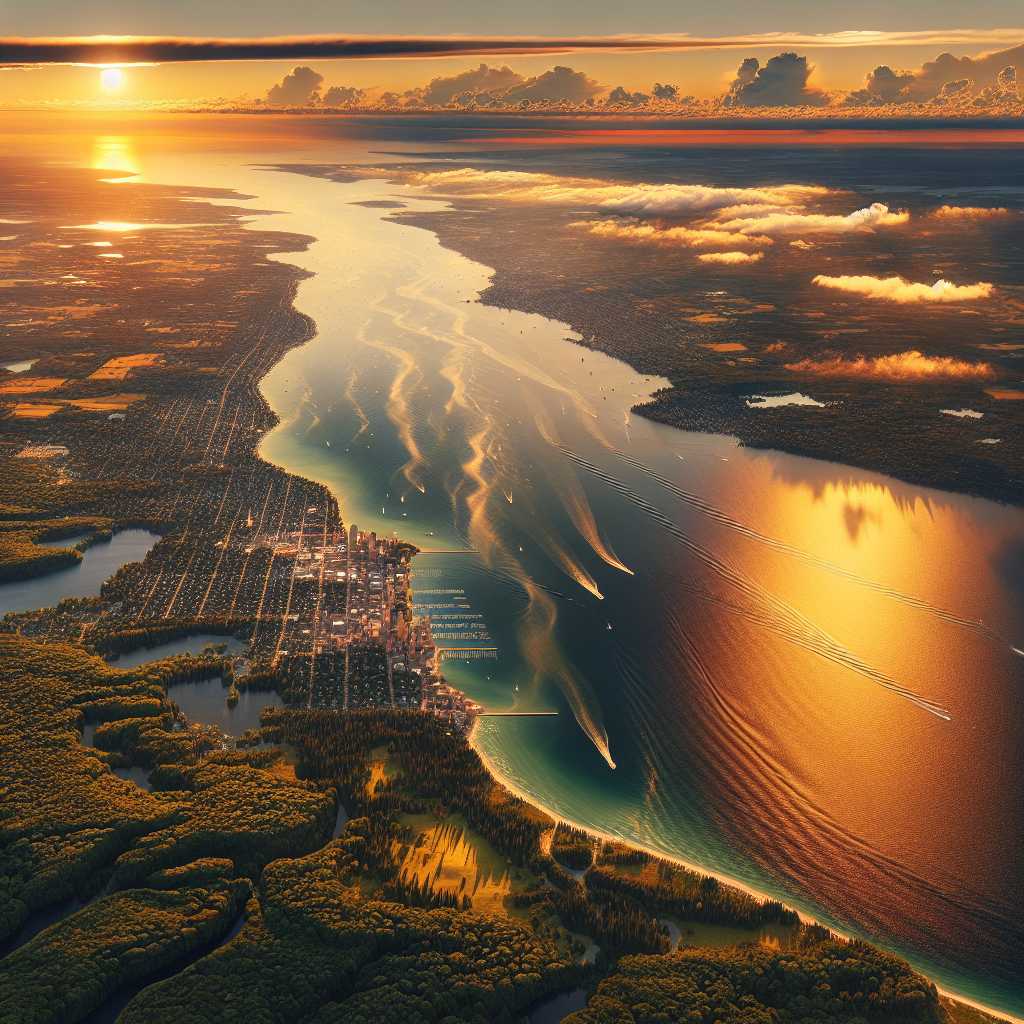## The Vast and Mighty Great Lakes: A Comprehensive Overview ##
The Great Lakes represent one of the most significant natural freshwater systems on the planet. These interconnected bodies of water, situated between the United States and Canada, offer a rich tableau of ecological diversity, historic significance, and economic vitality. Spanning thousands of miles and holding about 84% of North America’s surface fresh water, the Great Lakes are an irreplaceable resource for both nations.
Introduction to the Great Lakes Region
The Great Lakes consist of five main lakes: Superior, Huron, Michigan, Erie, and Ontario. They are connected by a series of rivers, straits, and canals including the Saint Lawrence Seaway, which allows navigation from the Atlantic Ocean into the interior of North America. The area surrounding the lakes features diverse ecosystems and wildlife, major cities including Toronto, Chicago, Detroit, and Cleveland, as well as smaller communities that rely heavily on the lakes for sustenance and recreation.
Geography and Hydrology
The geography of the Great Lakes basin is as varied as it is extensive. Lake Superior is the largest and deepest, known for its cold temperatures and imposing presence. Lake Michigan is the only one located entirely within the United States, while Huron is remarkable for its vast underwater feature: the Alpena-Amberley Ridge. Erie, shallowest of the big lakes favors a warmer climate encouraging agricultural practices nearby, and Ontario serves as the gateway to the Atlantic via the Saint Lawrence River
Hydrologically speaking, these bodies form a chain-like water flow system. Beginning with Lake Superior at its most westerly point, water flows into Lake Huron through the St. Mary’s River, then combined waters from both Superior and Huron enter Lake Erie through the Detroit River. Lake Erie’s waters cascade over Niagara Falls into Lake Ontario from where they finally make their way into the Saint Lawrence River.
Environmental Significance
The environmental importance of the Great Lakes cannot be overstated. The wetlands around these waters serve as breeding grounds for numerous species of fish and birds, while its expansive forests are home to diverse fauna. Pollution control and habitat restoration projects have aimed to counteract historical damage from industrialization and urbanization.
Efforts to protect these vulnerable ecosystems have been championed by cross-border collaborations like the Great Lakes Water Quality Agreement between Canada and the U.S., showcasing a broad understanding of their shared responsibility for ecological stewardship.
Economic Impact
Economically too, the Great Lakes are powerhouses. Supporting a multi-billion dollar economy that includes shipping critical goods such as iron ore, grain, and coal across North America. Additionally, recreational activities like fishing, boating, and tourism fuel local economies in both countries.
The commercial fishing industry historically played a major role economically but shifted more towards sports fishing due to declines in certain fish populations from overfishing coupled with invasive species disrupting aquatic life balances.
Historical and Cultural Context
Historically speaking,the lakes have played pivotal roles as transportation routes during European colonization and were key battlegrounds in conflicts such as during the War of 1812. The region is dotted with historical sites reflecting its Native American history and European settlement periods.
Culturally, this region has developed a unique identity intertwining Canadian-American influences reflected in music, literature, cuisine and sporting traditions aligned with maritime heritage engrained within surrounding communities.
Challenges Facing the Great Lakes
The Great Lakes face numerous environmental challenges including invasive species like zebra mussels which disrupt food chains; pollution run-off threatening water quality; and climate change impacts such as altering water levels.
Moreover, infrastructure such as dams and channels have modified natural waterways having consequences on ecosystem functionality necessitating ongoing scientific research and policy discussions addressing ecological conservation coupled with sustainable regional development.
Notes
Image description: An aerial panoramic view highlighting all five Great Lakes laying across forest-covered landscapes dotted with cities under clear weather conditions reflecting partly above cloud-covered areas meeting at distant horizon settersetting sun over Lake Michigan displaying golden orange hues on partial water surfaces illuminating traversing boats creating frothy wakes—expressing both bustling activity and serenity inherent to these freshwater giants.

